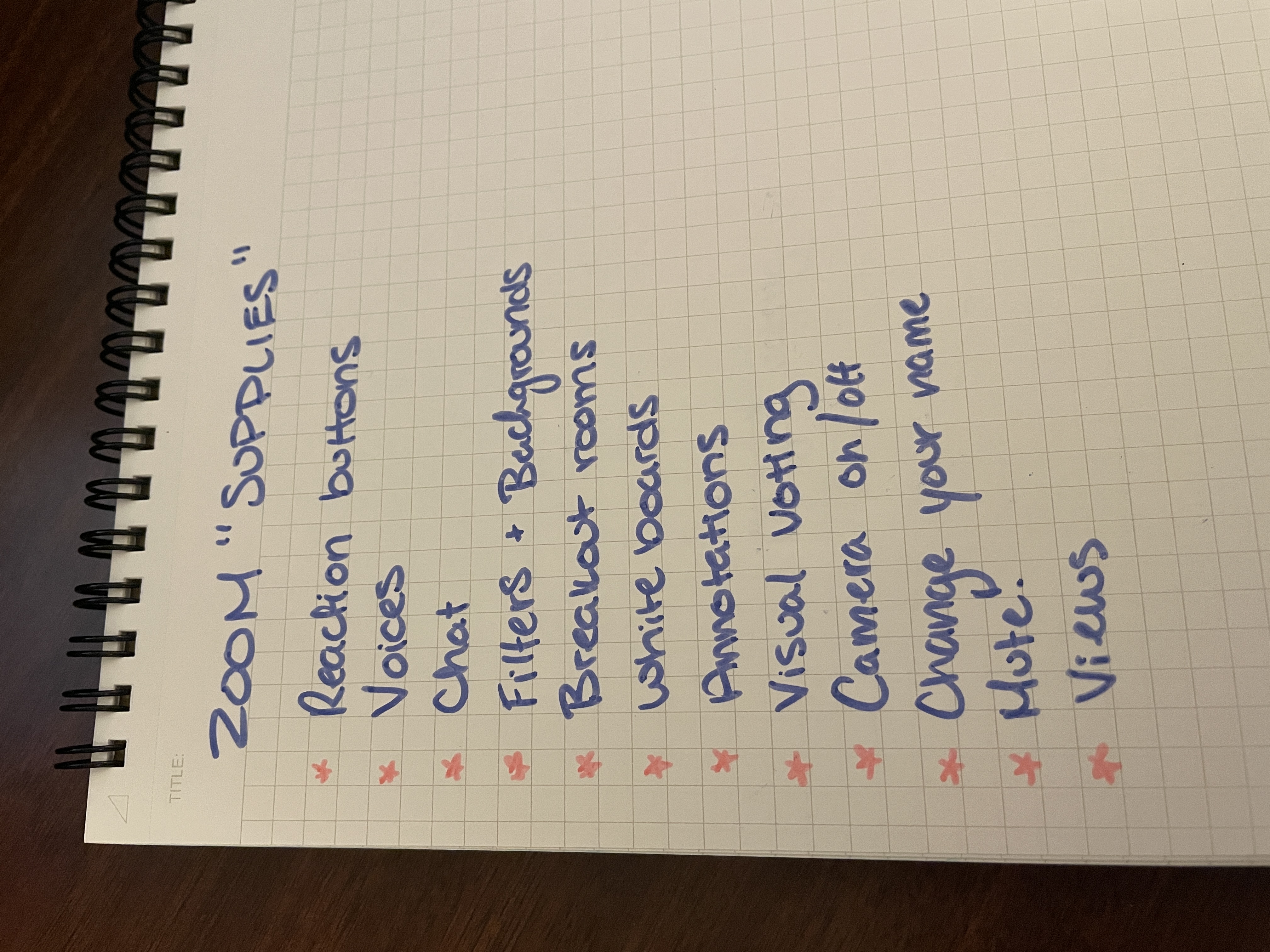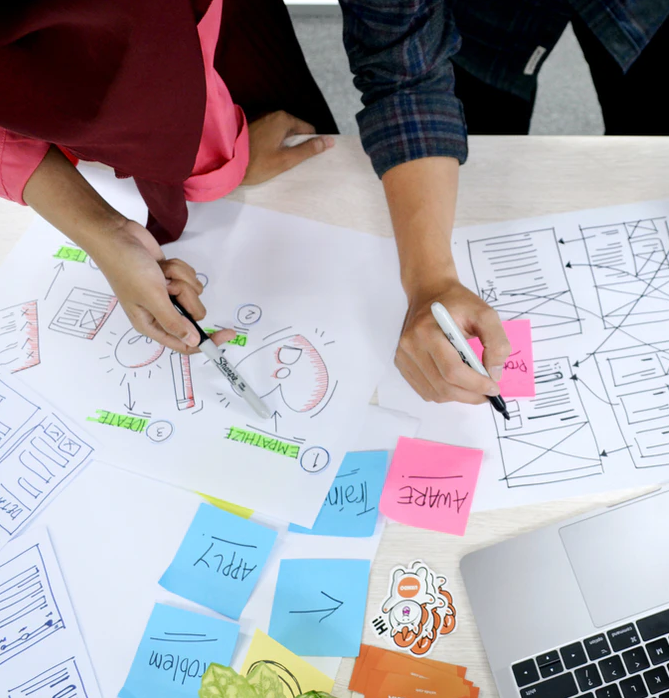I think of emergent facilitation as building the road that you and your participants are traveling on as you travel down it.
Whether that’s because you walk into a room where you thought the group needed A and they actually need Z or because half-way through the day you realize your agenda isn’t working and you have to throw it out, we all likely emergently facilitate at some time or another.
When some people hear the term “emergent facilitation,” they think of Adrienne Marie Brown’s book Emergent Strategy where AMB spends a chunk of the book talking about a “Trust the people” based process where, “participants can shape the meeting.” It was AMB who first introduced me to the word “emergent” to refer to facilitating an evolving and participant-created agenda, and I have loved it ever since.
Emergent facilitation is an incredibly participant-centered, flexible, and responsive way to facilitate. It’s also, for a lot of people, an intimidating idea (or unexpected situation).
Going in without an agenda and building as you go? No thanks.
The trick with emergent facilitation is just because you can’t plan for it the way you can with other facilitations, doesn’t mean you can’t prepare.
Our June Brain Jam focused on the question, “What can we do to prepare for an emergent facilitation when we can’t create an agenda?” Turns out, we can do quite a lot.
Know Your Supplies
Before you walk into the room (or sign on to the Zoom), know what you have at your disposal to use. During the Brain Jam, we listed out all the “supplies” (features and capacities) we could use while facilitating on Zoom without ever having to use a different technology. It was a longer list than I had expected! In the moment, when you’re thinking of a million different things about the session, it’s easy to forget what you have at your disposal, so listing out your supplies ahead of time is helpful.

When you’re facilitating in person, you might list out things like, “sticky notes, flipchart, markers, PlayDoh, Legos, scrap paper,” etc.
Know What Processes You Know
What processes do you know how to facilitate?
I’ll bet you know more than you think. Pair & Share is a process, Pro-Con List is a process, Go Around Share is a process: any time you have a group interact in a particular way, that’s a process.
When you’re emergently facilitating, you’re constantly asking the questions, “What do we need to do?” and “How can we best do it?” Knowing what processes you know how to facilitate can accelerate your ability to answer that second question.
During the Brain Jam, everyone had Facilitator Cards, so they had 60 processes to choose from. But just because you have them doesn’t mean you know them. So we had each person sort their deck into two into two piles, “cards I think I know,” and “cards I don’t think I know.” The “I know” pile is what you’re working with for an emergent facilitation. You want to be able to look quickly through some cards, confident that you know how to facilitate them, and find one in that moment.
If you don’t have Facilitator Cards, you can still spend time identifying the processes you know. Get a stack of index cards and write down the processes you know how to do. Look through old agendas (especially ones that were highly interactive or went particularly well) and pull out the structures behind those activities and write them down. You can also look through the processes we include in the deck on our cards page and add those to your index cards.
What’s most important here is to end up with a stack of cards where each one is a process that you already know how to facilitate.
Having them as cards, rather than on a spreadsheet or list, is super helpful when it comes to making decisions at break time. It’s easy to look through them without getting overwhelmed, since you’ll be looking at them one at a time. It’s also nice because you can clearly note or separate which ones you’ve already done as you build your agenda. As you facilitate, put a check next to the ones you’ve used already so that you can continue to bring in new processes to keep the session fresh and energized.
Have A Few Stock Activities, Mini-Lectures, or Stories Going In
Emergent facilitation is a big creative lift and being able to run an activity or give a mini-lecture you’ve done before can be a welcome break for your brain during a session. It can also feel like you’re going in with a few guarantees. If you’re a comedian, you want to know you have a couple good jokes that always land. If you’re a facilitator, you want to have a few tried-and-true things in your back pocket you can pull out if you need them.
It could be a mini-lecture that you’ve done before or a story that you want to share followed by a simple, “turn to the person next to you (or in your breakout room) and share something you’re thinking about more from that story.” Mini-lectures and stories also give your participants a short break from more active participation, which can be a nice change of pace if you’ve run a highly participatory session so far.
Activities that you’ve done before are also great to have on hand during an emergent facilitation, particularly those that involve pairs or small group work. Why? Because when your participants are in pairs or small groups, you can give yourself a bit more time to think about and plan the next activity (or two).
Know What Room/Zoom You’re Getting Into
The last piece of prep for an emergent facilitation is to know what sort of room (or Zoom) you’re going to be facilitating in.
If you’re facilitating in person, have your point of contact give you a video tour of the room that you’ll be using. Emergent facilitation is complex and you don’t want to count on the ability to do breakout groups in pods of desks and find out there is only a conference table, or plan to use the walls for sticky notes only to find them covered in photos (speaking from experience on those 🥵).
If you’re facilitating on Zoom, make sure it’s on your account so all the settings or permissions are how you like them. If that isn’t possible, send a list of questions ahead of time to be sure you understand their settings (how long is their timer after you close breakout rooms, do they allow annotation/screen-sharing for participants, do they enable the waiting room, etc.). If it’s a platform you don’t usually facilitate on, ask for a tech test (like a mic check) and try things out before you get going.
**
Being able to be agile and present with emergent facilitation is a challenge. When we’re building as we go, we have to continuously make decisions about where to go next and how best to get there. Knowing what supplies we have and what processes we know, having stock activities, and figuring out the room/Zoom set-up allows us to narrow down (or at least understand) the variables so we can make those decisions quickly and on the fly.
When we know that we brought the right tools with us and that the elements we can know are accounted for, that frees up more mental RAM for creative and intuitive decision making when we need it most: go-time.
P.S. If you’ve got yourself some Facilitator Cards and you’re curious about emergent facilitation, check out the replay of our June Brain Jam here on our YouTube channel.
